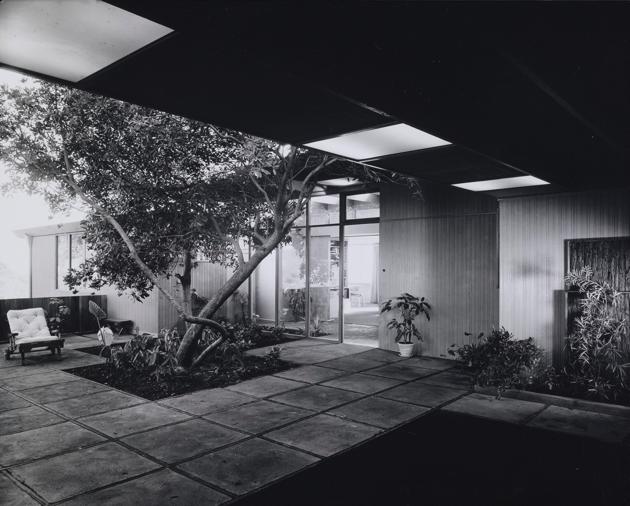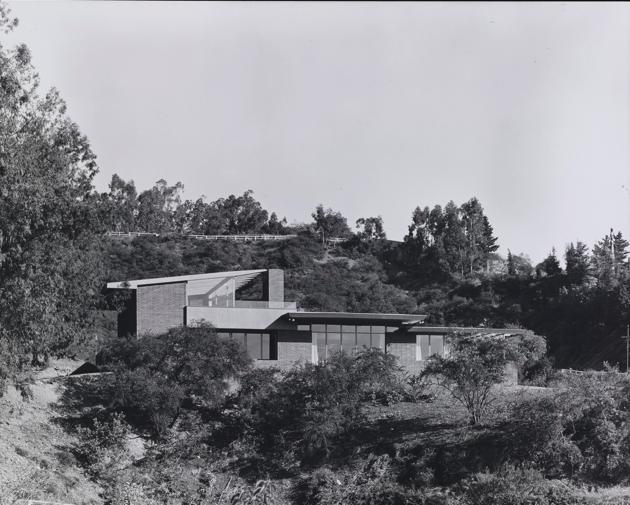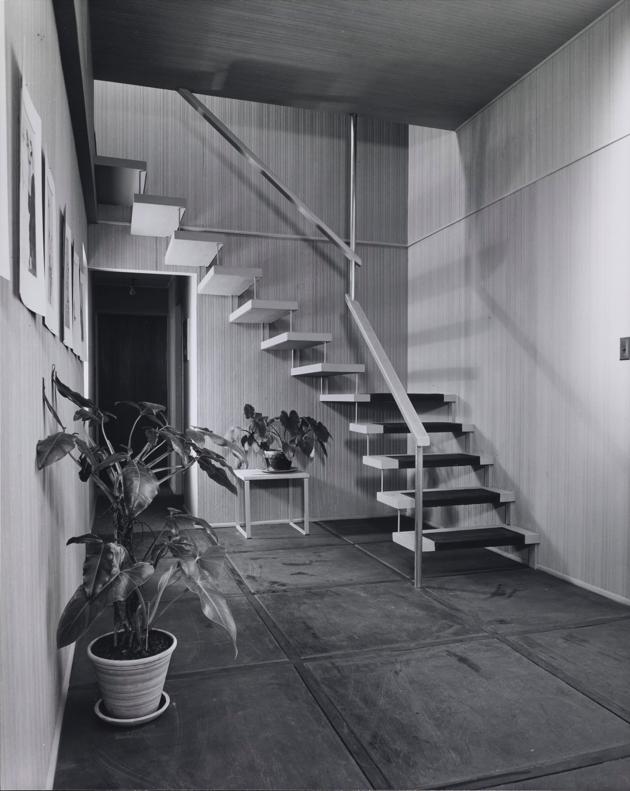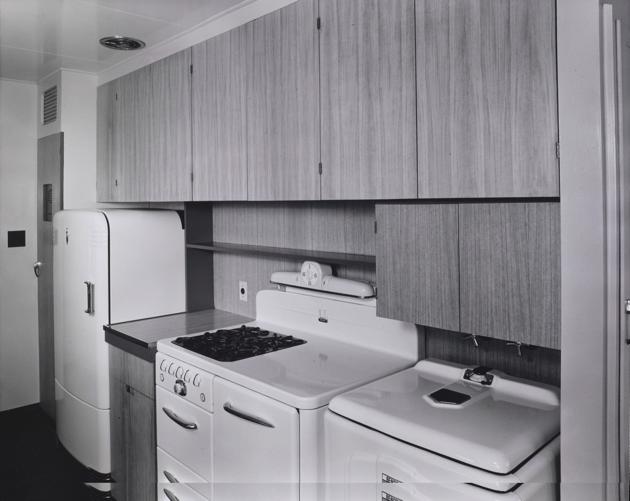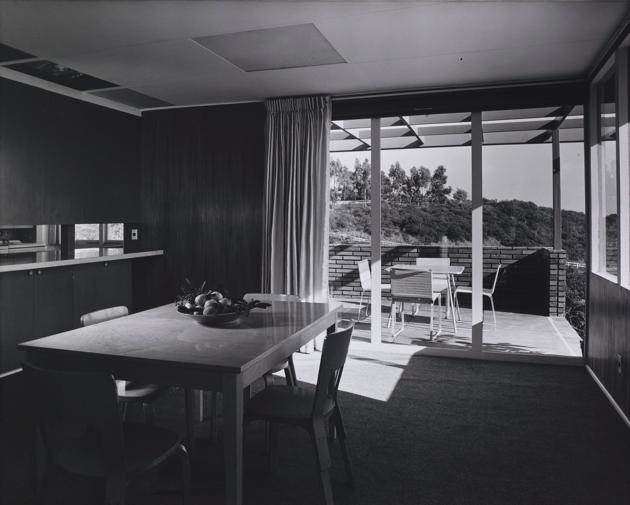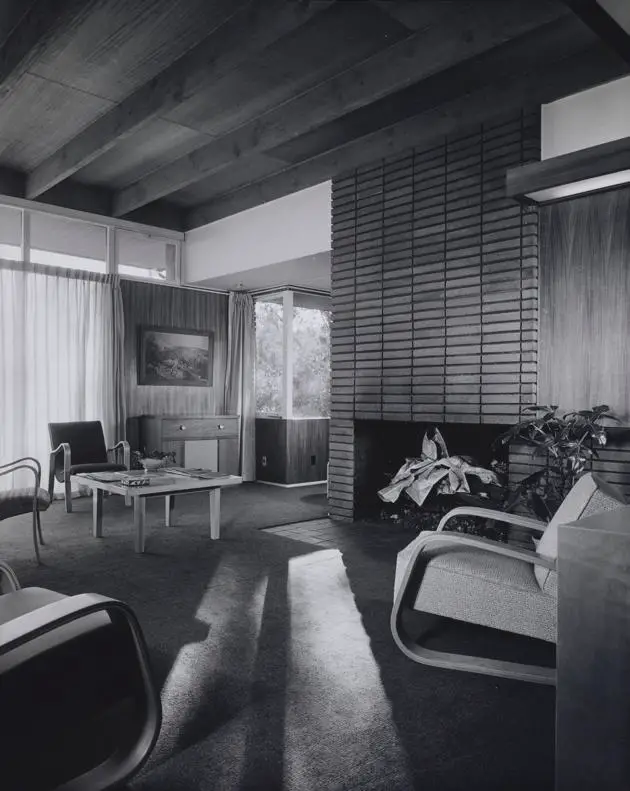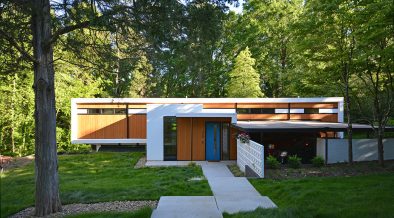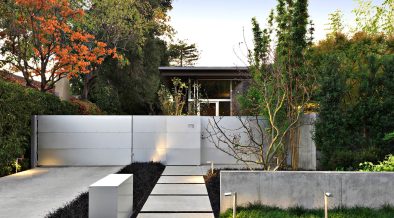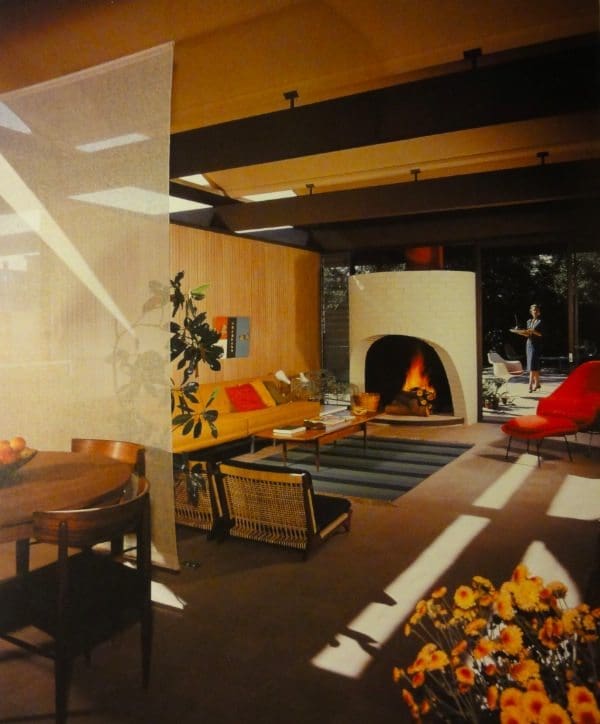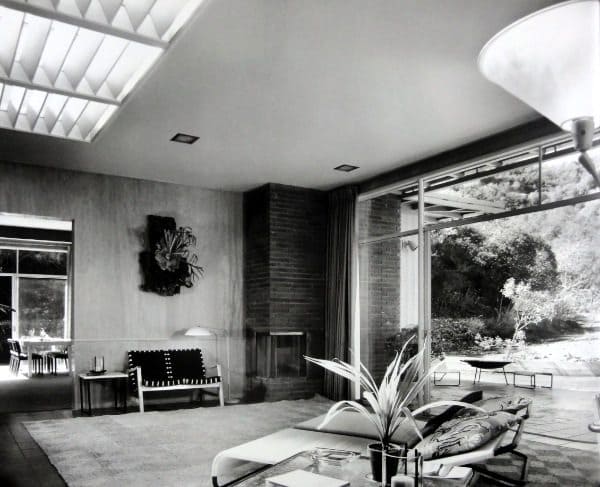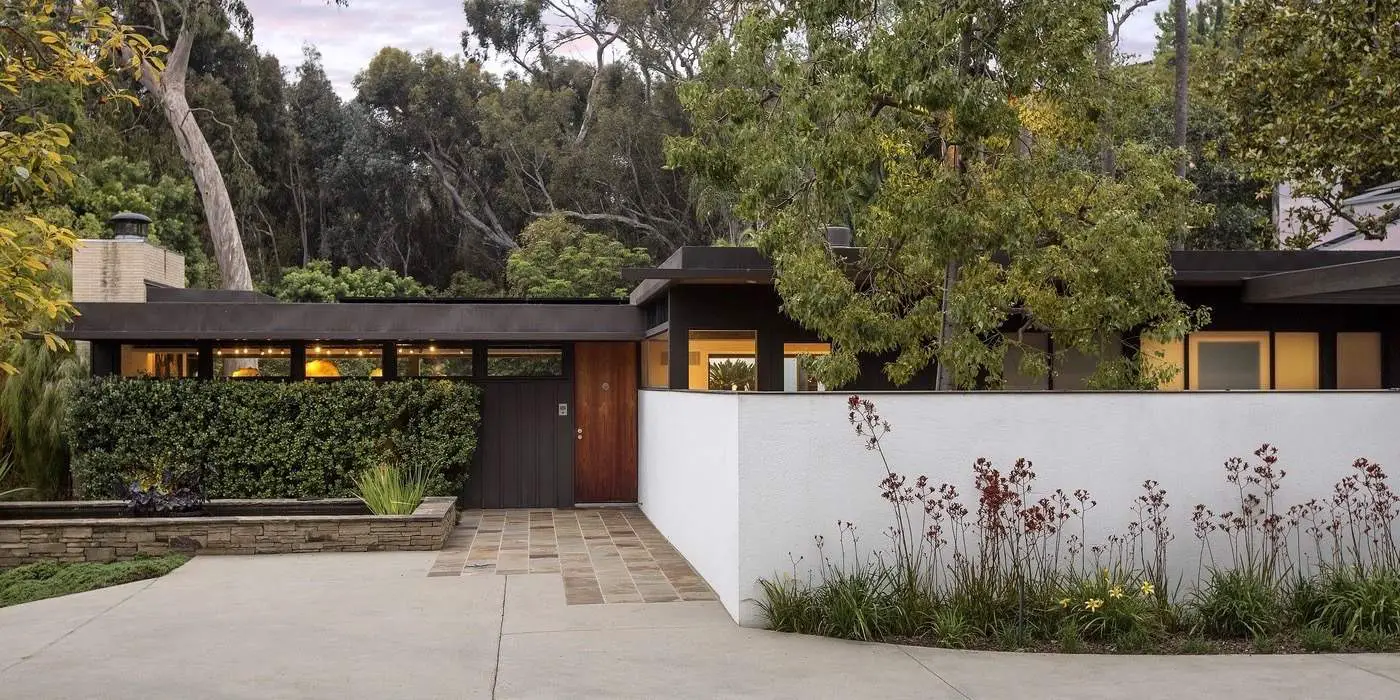Sponsored by Arts & Architecture Magazine, the Case Study House program in the United States – which ran from 1945 until 1966 – resulted in a number of innovative homes designed by some of the most prominent architects of the day.
Case Study House n. 16 (CSH#16), designed by Rodney Walker, was actually the architect’s own home, and was an unanticipated inclusion in the Case Study House program. It was also the third house to be built by Walker. The influence of RM Schindler, for whom Walker had previously worked, can clearly be seen throughout this mid-century modern house.
The most spacious of the program, at 2,000 square feet, Case Study House n. 16 boasted a truly stunning location in Beverly Hills, placed on a 3.5 acre mountain tract, with panoramic views of both the city and the ocean.
Differentiating itself from the others, the CSH n.16 incorporated several features that didn’t appear in any of the other homes within the program, such as a large sky-lit entrance hall, a sitting room within the master bedroom, and the provision of space for servants’ quarters. However, in common with other homes in the program, Case Study House n. 16 also had an ample outdoor area to complement its voluminous indoor space.
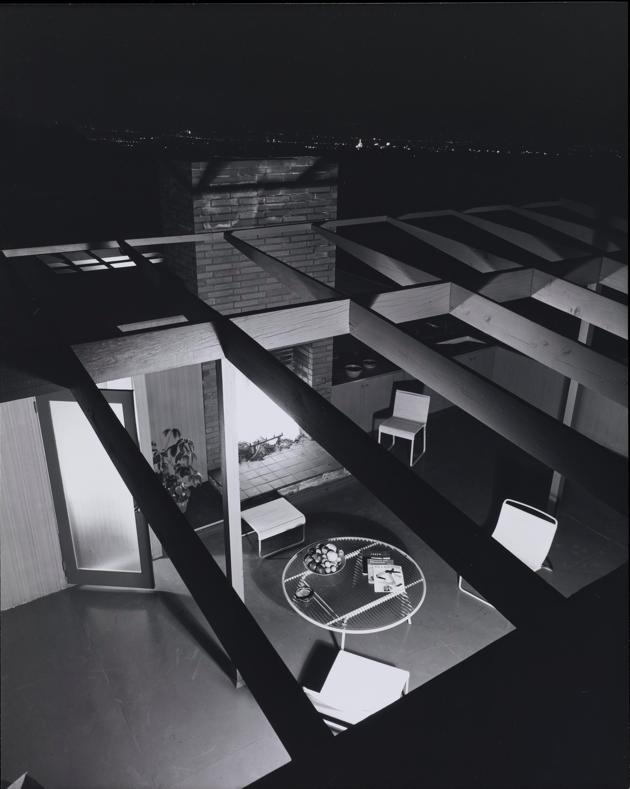
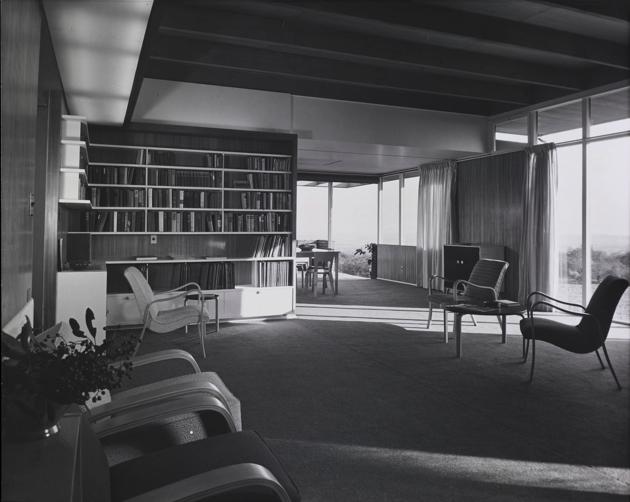
Despite some relatively formal features, the house was made of a simple, modular wooden construction system, with clearly defined zones for public and private use.
Outside, the exterior was mostly built of combed plywood, with just the south side being constructed of brick and glass. A patio on the north side of Case Study House n. 16 was paved with brown-stained concrete blocks and enclosed by a solid redwood wall.
Meanwhile, the most private sections of the home, such as the outdoor dining and recreation areas, were thoughtfully screened from the road, adding a touch of seclusion for the residents.
Forming a cohesive link between the outdoor and indoor areas, the loggia provided access to any room in the house, along with a cantilever stairway up to the 1,000 square foot roof deck.
Other clever features combined to link the external and internal parts of the residence together, too. For instance, just like the patio, the loggia was also paved with brown concrete blocks, and the patio itself extended into the living room, interrupted only by three stunning floor-to-ceiling glass panels.
The interior walls were also finished in the same plywood as that used outside, and the ceiling was constructed from heat-absorbent glass with a greenish tinge, which flooded the loggia with a cool brilliance.
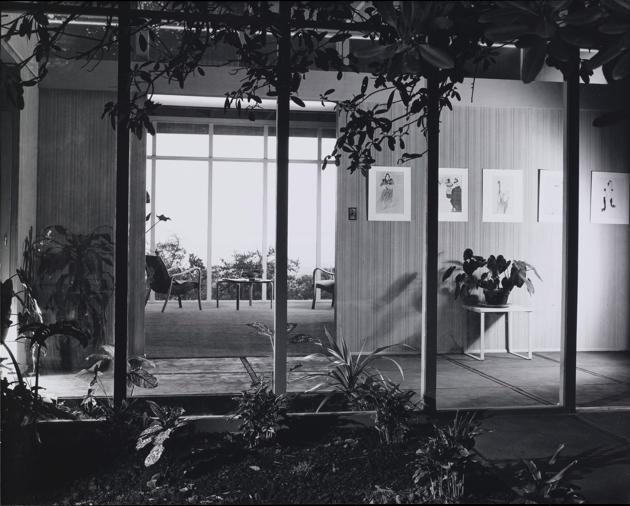
Internally, the living area could be used as one, large space, or divided up into smaller, more intimate areas by the clever use of sliding panels and hanging screens.
The living area also featured built-in shelves for books and records, plus clever closed compartments for storing magazines, forming a useful library corner.
Another major feature of the living space was a 21-foot light shelf, carrying fluorescent tubes to illuminate the room. The study had a large, built-in lounge, plus a wardrobe, and was situated close to the bathroom, making it ideal for use as a guest bedroom when required. Rounding off the living area, the dining space had a nine-foot wide sliding glass panel, opening up on to a terrace, which also adjoined the kitchen.
The kitchen itself exuded a warmth in keeping with the rest of the house. Its worktops and cupboard doors were all laminated with a burn-proof, stain-proof clear plastic surface to protect the beautiful wood beneath, while south- and east-facing windows kept the room brightly lit throughout the day.
Finally, we turn to the bedrooms of this mid-century modern house, of which there were three (not forgetting the added potential of being able to use the study as a guest room).
Bedroom number one was particularly spacious, with its own sitting area alongside nine feet of windows, facing the view to the south. The room was finished in bold-grained satinwood plywood.
Bedroom number two was the children’s room, and it faced the west, with a view of eucalyptus trees and green hills.
The third and final bedroom was intended to be used by servants or guests, and was situated away from the other two, with its own separate bathroom.
The pictures come form Case Study House Program, a must have book for all mid-century modern and modernist enthusiastic.

